We spent the morning exploring the ancient city of Pompeii, destroyed and preserved by the devastating eruption of Mount Vesuvius in 79 AD.
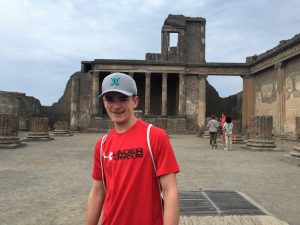
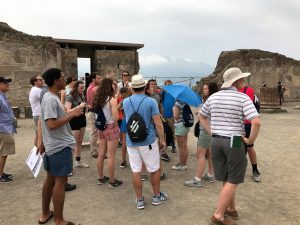
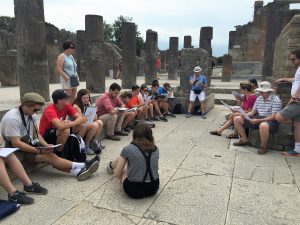
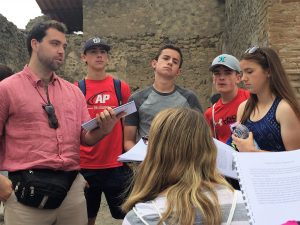
Reading Latin in the Forum! We translated Pliny the Younger’s letter about the eruption, in which his uncle died attempting to rescue victims of the ash and pumice cloud. The Latin passage helped us to understand the disaster on a human level: Cervicalia capitibus imposita linteis constringunt; id munimentum adversus incidentia fuit… “They [the inhabitants of Pompeii] tied pillows on their heads with linens; this was a protection against the things falling from the sky…”
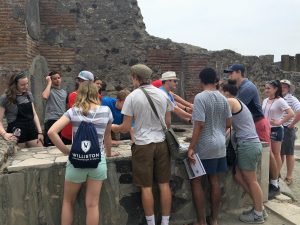
Students act out the roles of shop-keeper and customer in the remains of a Roman Taberna, one of the many shops located in the ground floor of Roman houses just off the street.
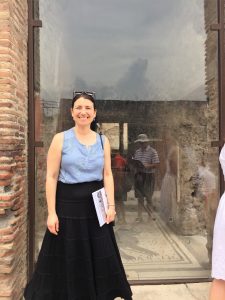
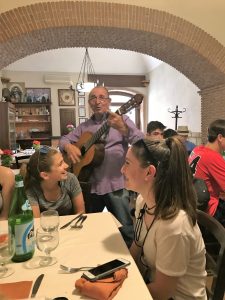
Lunch at Tubba Catubba a few minutes’ walk from the archaeological park. We were serenaded by a guitarist singing traditional Neapolitan songs!
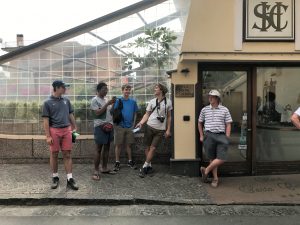
Getting ready to transition to Herculaneum…
In the afternoon we explored the smaller and more poignant site of Herculaneum. Instead of perishing under a slow but relentless rain of rock and ash like Pompeii, Herculaneum was destroyed when Vesuvius’ blast cloud collapsed in a 60 mile/hour, 760 degree F. burst of ash, rock and volcanic gas that killed inhabitants on contact and buried the city under 65 feet of ash and debris in a matter of hours. The heat and speed of Herculaneum’s burial resulted in better preservation of organic matter–for example, one can still see the carbonized wood beams and door frames of inhabitants’ homes.
http://decodedpast.com/destruction-herculaneum-vesuvius-claimed-one-victim/7992
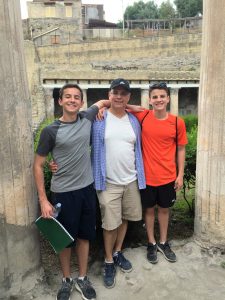
The Albanese family explores a Herculanean domus.
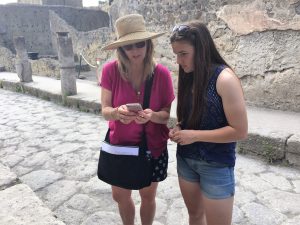
Looking up some statistics on Herculaneum.
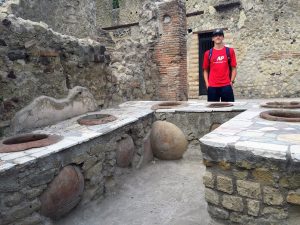
You’ll have to ask Ryan the shopkeeper if you want to buy anything at this taberna!
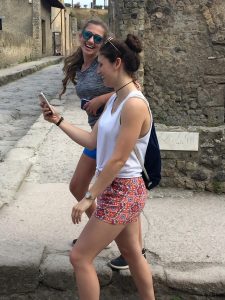
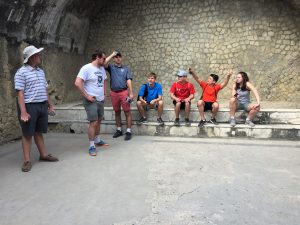
Mr. Eberle explains the workings of the balneae (baths) to a group of students.
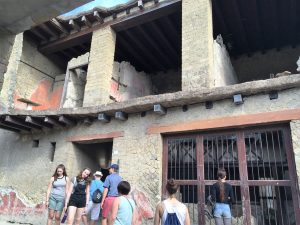
Amazing to see two-story houses still standing. Note the wooden beams!
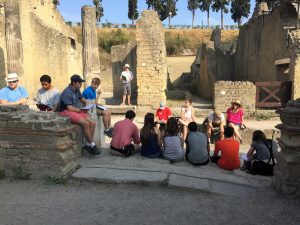
Reading Latin: We translated Statius’ Silvae, IV 4.78-86:
Mira fides! Credetne virum ventura propago,
cum segetes iterum, cum iam haec deserta virebunt,
infra urbes populosque premi proaviaque fato
rura abiisse pari?
“Marvelous to believe! Will future generations of men,
When the crops will flourish again and this deserted place will grow green,
Believe that cities and people are buried underneath, that an ancestral countryside
Disappeared in a mundane act of fate?”
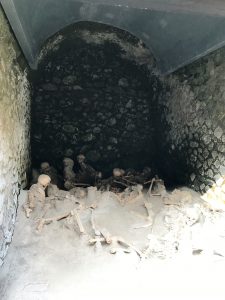
A deeply moving moment: we observed a respectful silence as we viewed the skeletons of Herculaneum’s inhabitants, frozen in the agony of their dying moments as they sought shelter at the sea shore. We could see that many victims had tried to shield and comfort one another.
This was one of many profound moments of our trip, when our eyes were opened to the precious value of the present moment—our lives are a gift that we must appreciate and enjoy to their fullest right now!
Dum loquimur, fugerit invida
aetas: carpe diem, quam minimum credula postero.
“While we are talking, envious time will have fled: seize the day, trusting as little as possible to tomorrow.” –Horace, Ode 1.11
Ora è bellissima. “Right now is the most beautiful.” –Graffito on a wall in the Campo Marzio, Rome

